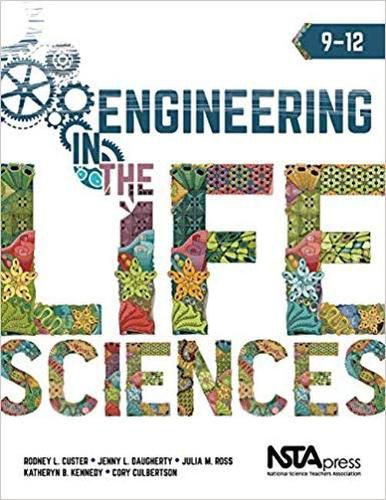Readings Newsletter
Become a Readings Member to make your shopping experience even easier.
Sign in or sign up for free!
You’re not far away from qualifying for FREE standard shipping within Australia
You’ve qualified for FREE standard shipping within Australia
The cart is loading…






Engineering in the Life Sciences, 9-12 provides how-to advice that will make the book your go-to resource. It offers six standards-based lessons that show how to infuse engineering concepts into existing courses. It also provides wide-ranging material from each of the major content areas in biological sciences, including structures and processes, ecosystems, heredity, and biological evolution. Spark your high school students’ interest with lesson titles such as Designer DNA,
Ecosystem Board Game, and B-pocalypse. Inspired by extensive field testing, the authors made the book easy to use in diverse settings by supplementing the lessons with detailed support materials and adding chapters on managing engineering-oriented activities and conducting assessments. They also included teaching tips and connections to standards, plus five case studies about how engineering concepts and science intersect to address human needs. The result is lessons that are eminently doable, illustrating how you can use an authentic engineering approach to engage students with the life sciences.
$9.00 standard shipping within Australia
FREE standard shipping within Australia for orders over $100.00
Express & International shipping calculated at checkout
Engineering in the Life Sciences, 9-12 provides how-to advice that will make the book your go-to resource. It offers six standards-based lessons that show how to infuse engineering concepts into existing courses. It also provides wide-ranging material from each of the major content areas in biological sciences, including structures and processes, ecosystems, heredity, and biological evolution. Spark your high school students’ interest with lesson titles such as Designer DNA,
Ecosystem Board Game, and B-pocalypse. Inspired by extensive field testing, the authors made the book easy to use in diverse settings by supplementing the lessons with detailed support materials and adding chapters on managing engineering-oriented activities and conducting assessments. They also included teaching tips and connections to standards, plus five case studies about how engineering concepts and science intersect to address human needs. The result is lessons that are eminently doable, illustrating how you can use an authentic engineering approach to engage students with the life sciences.